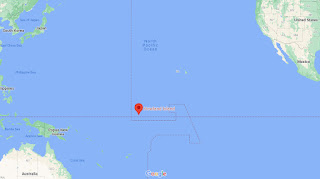View the Index of Military Histories
"Spearhead"
(Original article written 7/10/08 by Jim Broumley)
The 3d Armored Division is a heavy mechanized division of the United States Army that served in World War Two, the Cold War defense of Western Europe, and the Persian Gulf War. The 3rd Armor Division was reduced to zero strength in 1992, but not inactivated.
The Third Armored Division was activated on April 15, 1941, at Camp Beauregard, Louisiana, and by June had moved to Camp Polk to begin training. The 3rd AD arrived in England on September 15, 1943, and conducted training in the Liverpool and Bristol Areas. By June 29th the first elements of the 3rd Armored Division entered combat in the Normandy area of France. The Spearhead Division was assigned to First Army for the duration of its WWII European service.
The 3d Armored Division entered combat as a whole on June 29, 1944, taking part in the hedgerow fighting. The Division broke out at Marigny and with the 1st Infantry Division swung south in an exploitation of the St. Lo break-through. In August 1944, the Division participated in the heavy fighting involved in closing the Falaise Gap, pocketing the German Seventh Army. Six days later, on August 25, 1944, the Spearhead Division had cut across the Seine River and was streaking through Meaux, Soissons, Laon, Mons, Namur, and Liege. The 3rd Armored Division breached the Siegfried Line with the capture of Rotgen, on September 12, 1944, and continued a slow advance against heavy resistance to the vicinity of Langerwehe.
At the start of the Battle of the Bulge, the 3rd Armor was shifted to Houffalize, Belgium, where it severed a vital highway leading to St. Vith, and in January 1945, participated in the reduction of the German salient west of Houffalize. After a brief rest, the Division returned to the front, crossed the Roer River into Duren, broke out of the Duren bridgehead, and drove on to capture Koln, Germany on March 6, 1945.
The Division began a thrust into the Rhineland of Germany on February 7, 1945. On March 31, 1945, the commander of the division, Major General Maurice Rose, famed as one of few commanding generals to frequent the front lines during combat, rounded a corner in his jeep and came face to face with a German tank. As he withdrew his pistol to surrender, the young German tank commander, apparently misunderstanding Rose's intentions, shot and killed the general.
The Division took Paderborn, assisted in mopping up the Ruhr pocket, crossed the Saale River, and after overcoming stiff resistance took Dessau. On April 11, 1945, the 3rd Armored discovered the Dora-Mittelbau concentration camp. The Division was first to arrive on the scene, reporting back to headquarters that it had uncovered a large concentration camp near the town of Nordhausen. Requesting help from the 104th Infantry Division, the 3rd A.D. immediately began transporting some 250 ill and starving prisoners to nearby hospital facilities.
As the war drew to a close in May of 1945, the 3d Armored Division consolidated near Dessau. The 3rd Armor performed occupation duty near Langen until it was inactivated on November 10, 1945. During the war, the 3d Armored Division participated in 231 days of combat. They had lost more tanks in combat than any other U.S. division. The Division's casualties included a total of 2,540 killed, 7,331 wounded, 95 missing, and 139 captured. Total battle and non-battle casualties came to 16,122.
With the Cold War starting to heat up, the 3rd Armored Division was reactivated on July 15, 1947, at Fort Knox, Kentucky as a training unit. In 1955 it was reorganized for combat and the next year shipped out to Germany once again. In the event of war in Europe, the 3d Armored Division's primary mission, along with other V Corps units, was to defend the well-known Fulda Gap between East and West Germany against numerically superior Warsaw Pact forces. At the peak of East/West tensions during the 1980s, as many as nineteen Soviet and East German divisions faced off against V Corps units in West Germany.
To prepare their defenses against an invasion, the Division's units frequently conducted field training at Hohenfels, Wildflecken, and Grafenwöhr training areas. The 3d Armored Division would also frequently take to the German countryside for training maneuvers, including what became an annually staged war game, REFORGER, which simulated an invasion of Western Europe by Warsaw Pact forces.
The most famous soldier in the 3rd Armored Division during the 1950s was Elvis Presley, assigned to Company A, 1st Battalion, 32nd Armor Regiment, Combat Command C at Ray Barracks in Friedberg. After his time in service, Elvis made the movie G.I. Blues, in which he portrays a 3rd Armored Division tank crewman with a singing career. Former Secretary of State, General Colin Powell also served in the 3d Armored Division and went on to command V Corps in Germany.
By 1990, the Iron Curtain over Eastern Europe collapsed, East and West Germany would soon be reunited, and the Soviet Army was being withdrawn back to the Soviet Union. With these events, the Cold War came to a peaceful conclusion, freeing U.S. army units in Europe for other deployments.
In November of 1990, VII Corps departed West Germany for Saudi Arabia to take part in Operation DESERT SHIELD and, later, in Operation DESERT STORM. Because the 3rd Armored Division was more advanced in its modernization process, and well-equipped with Abrams Tanks and Bradley Fighting Vehicles, they deployed with VII Corps to Southwest Asia.
On February 23, 1991, the 3d Armored Division crossed the Line of Departure into Iraq with the 1st Armored Division on their left and the 2nd Armored Cavalry on their right. The Iraqi Army was surprised by the VII Corps end run into Iraq. Most of the enemy forces were focused on defending the Kuwait border with Saudi Arabia. By the fourth day of the war, the Spearhead had advanced over 50 miles into Iraq and defeated all enemy forces they encountered, including divisions of the Iraqi Republican Guard. In the 100-hour Gulf War, 3AD destroyed hundreds of Iraqi tanks and vehicles, and captured more than 2,400 Iraqi prisoners, with 15 division troops killed between December 1990 and late February 1991.
Following Operation Desert Storm and the liberation of Kuwait, the Spearhead Division returned to Germany. Camp Doha emerged as the focal point for the U.S. Armed Forces in Kuwait. The threat of future aggression necessitated the presence of U.S. forces to maintain security and stability in the Gulf region. U.S. military forces began rotating into Kuwait to provide security assistance, conduct training exercises, and perform necessary contingency planning. Among the first U.S. Army units deployed to Camp Doha after the Persian Gulf War were the 3d Armored Division, 11th Armored Cavalry Regiment, and the 8th Infantry Division.
On January 17, 1992, the 3rd Armored Division officially ceased operations in Germany, with a ceremony in Frankfurt at Division Headquarters, Drake Kaserne. The division colors were then returned to the United States, with the 3d AD still officially active, since Army Regulations state that Divisional "Casing of Colors" cannot occur on foreign soil. Official retirement took place at Fort Knox, on October 17, 1992. At that time, the 3rd Armored Division was removed from the official force structure of the U.S. Army.


















